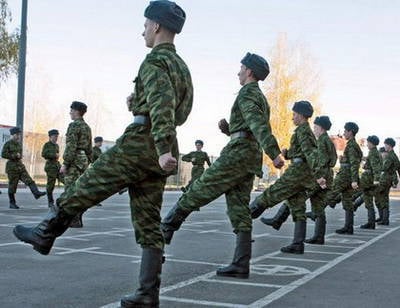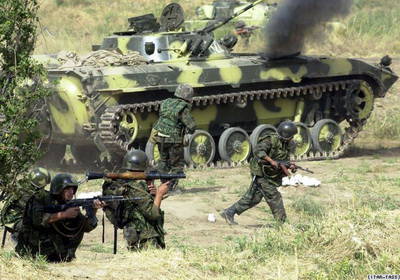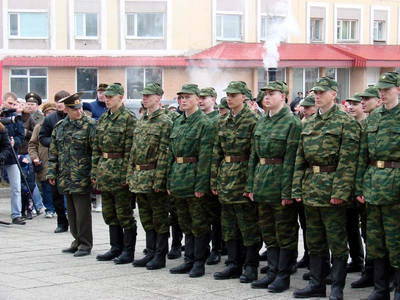Army reform, evaluation
According to Pukhov, a potential threat to Russia could be posed by the states of Central Asia and the North Caucasus, the expert does not rule out such a development when a Wahhabi Muslim emirate with a population of up to 70 million and a regular army in 50-70 th. person. At the same time, Pukhov ruled out a possible conflict between Russia and Ukraine, but allowed the possibility of an armed conflict with Japan.
For a long period of time, Japan claims 4 islands from the Southern Kuril Ridge: Iturup, Kunashir, Habomai and Shikotan, operating with a bilateral Treatise on trade and borders from the 1855 of the year. Russia adheres to the position that the islands became part of the USSR, of which Russia became the successor, following the end of the Second World War and Russian sovereignty over them is beyond doubt. For its part, Japan made the signing of a peace treaty between the countries dependent on this territorial dispute, which was not signed even after 65 years passed since the end of the war.

Pukhov especially emphasized that today the Russian army is in second place in the world in terms of its military potential. weapons after the United States and in third place after the United States and China, if we take into account non-nuclear weapons.
CAST specialists believe that by the summer and autumn of 2010, the Russian army has experienced the first stage of reform, and now it is waiting for new stages of reorganization and reform. The whole stage of the formation of the brigade structure of the ground forces, the transition to the new look of the Navy, the reform of the Air Force and the change of the role of the Supreme Command of the Armed Forces, which will be transformed into the main directorates, will be completed by 2015 year.
According to experts, the reform, which was never publicly announced, is developing in the right direction, receiving an additional impetus in 2008 after the conflict in South Ossetia. By and large, reform had to be started back in the 1992-1994 years, when the armed forces of the new state were created. However, then the political leadership did not find the will, ability and breadth of vision for the problem. Further, the reform was allowed to take its course, until the 2007 year, until this period everything was limited to endless compromise reorganizations. And only in 2008, following the results of the August military conflict with Georgia, did it become clear that military reform was inevitable.
During the 5 days of the August war, the army command and control system showed its complete inefficiency. The directives of the General Staff went first to the SKVO headquarters, then to the headquarters of the 58-army and from there they went into units and formations. At the same time, very low maneuverability of the Russian army was revealed, with the transfer of troops over considerable distances.
The main guideline of the reform was the reorientation of the modern Russian army to participate in local wars, and not in large-scale wars of the past with the participation of several opponents. Already, it is quite obvious that Russia is significantly inferior to the NATO bloc in the quality and quantity of the available weapons, even after all the cuts in the armed forces of the alliance. At the same time, the Russian army surpasses the similar regular formations of the majority of its closest neighbors.
Such an approach makes it possible to move away from the USSR mobilization scheme, which, in the event of a serious conflict, allowed 5 million people to be put under the gun. The revision of the strategy made it possible to eliminate unnecessary links in the structure of command and control of the troops: military districts, divisions and regiments, and in the future also the commanders of the main forces. The modern army is based on the brigade principle.

However, the distribution of funds for the reform of the Russian army, according to the Center, will cause a number of serious problems in the future. So the main focus is on the purchase of new types of weapons, and not on the recruitment of the army on a contract basis.
It is on the issue of rearmament of the army that so far it is possible to solve all the assigned tasks. For Russian fleet 2010 was one of the most successful in recent decades. The seemingly forever abandoned projects have begun, the construction of a whole series of new ships and submarines has begun, or vice versa, the contract for the purchase of Mistral landing ships has been signed, and the Bulava strategic missile has begun to fly. Along with this, there has been an increase in purchases for all other arms. Economic problems could somehow hinder this, but oil is again trading at $ 100 per barrel, which allows us to hope that the reform will be implemented on the issue of rearmament.
At the same time, the reduction of the fixed-term service to one year and the renewed refusal to replace conscripts with contract soldiers is a negative point at this stage of the reform. The reduction in the term of recruitment has led to the need to recruit individuals who do not fully satisfy the military, not only physically, but also morally and ethically, which generally leads to a decrease in the quality of the rank and file of the Armed Forces. Of the annual service life, half falls on the training of a soldier, because of this, the combat capability of military units greatly fluctuates over time, reaching its minimum when military personnel are transferred to the reserve and replaced with a new batch of conscripts.
Therefore, the units of constant combat readiness, staffed by soldiers as conscripts, have little combat readiness, according to experts from CAST. In addition, there is the problem of a very serious dispersion of troops due to the vast territories of our country, which negatively affects the speed of the transfer of the Armed Forces to the place of the conflict. According to experts, in the event of a local conflict, the Russian army will face a shortage of trained personnel, the problem of inter-theater maneuver with forces and equipment inside the country, as well as the staffing of modern weapons systems.
As a solution to the problem, an increase in conscription service up to 2 years can be proposed (in this case, the problem of the quality of the conscription force is not solved), or a return to the plan to put the army on a contractual basis once again. Ruslan Pukhov believes that at one time the decision to transfer military service to 1 a year was for the most part a populist step. It is no coincidence that the most effective units during the 5-day war with Georgia were professional soldiers, contract soldiers of the Airborne Forces, and not soldiers of conscripts. The TsAST analysts seem to be a more reasonable approach when the Russian army would be formed according to a mixed principle, with the maximum possible number of contractors, based on the real financial capabilities of the state.

Such an approach seems to be the most appropriate at this stage. Over time, the proportion of new weapons systems in the army will only increase, thoroughly exploring and effectively using a new weapon for one year the conscript soldier is unlikely to succeed. Taking into account the fact that the army is moving away from the concept of a “classic” big war, the need for large quantities of “cannon fodder”, in which today's draftees act, is virtually eliminated.
Meanwhile, it has not been possible to implement the project properly even with the school of sergeants. But it is the sergeants that should be the backbone of the new mobile army, able to successfully solve problems in local conflicts. First of all, the problem lies in the low wages of contractors, which does not allow to make such a service prestigious. To serve under the contract are either ideological (and there are not enough for all of them), or just non-arranging military people in a qualitative sense, who simply cannot realize themselves in civilian life.
Until a contractor receives a decent salary from him is difficult to ask for his service, he is not afraid of losing his job. My classmate returned from the army as a junior sergeant - commander of the self-propelled gun, and I am sure that the army in the state in which it exists now cannot protect anyone, primarily because of manning issues. While he was in school, he saw his squad leader once a week, and he was a contract soldier, received money from the state for something.
At present, the situation in the army is when soldiers do not want to learn anything, and the commanders do not want to learn anything. Because the first ones are just serving the number, none of them went there with songs, they perceive service as a punishment. The officers and sergeants, in turn, understand their attitude to the service and realize that they do not have enough time to turn recruits into soldiers. Therefore, it is better to invest money once and to prepare a truly professional soldier than to “represent” the training of hundreds of thousands of recruits from year to year.
Information